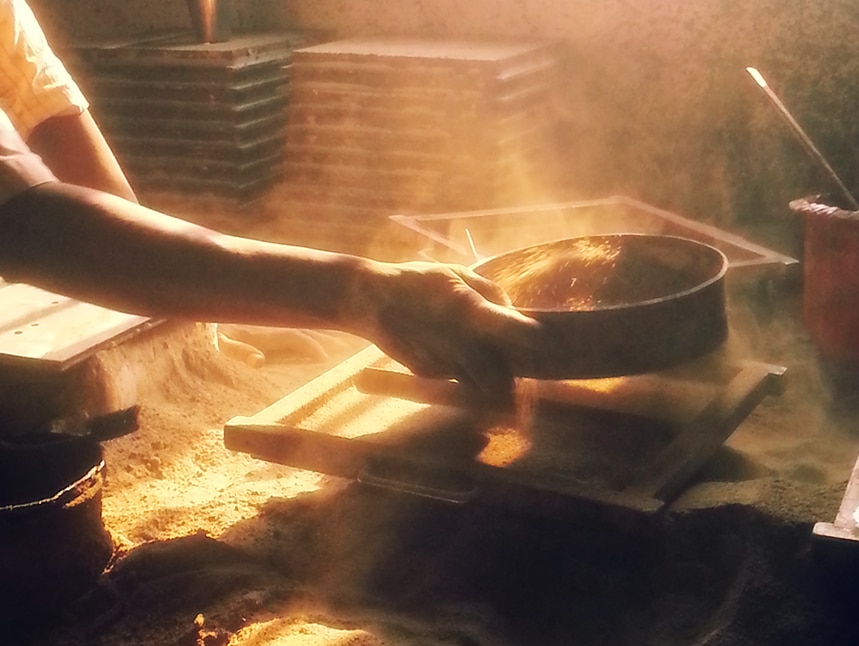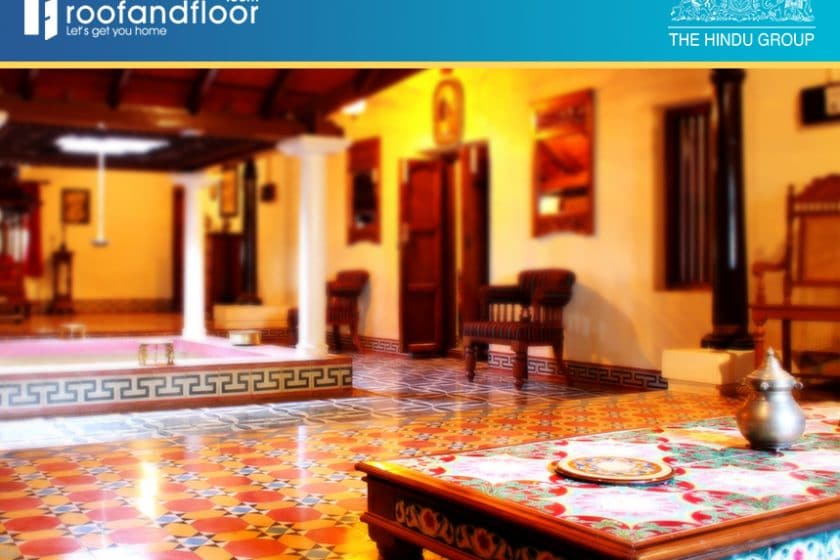- Athangudi tiles are a chic and ethnic way to decorate your home
- Infused with colour, these tiles embody the culture of South India
- Handmade by master craftsmen
Athangudi is a tiny village in Karaikudi in the district of Sivaganga in Tamil Nadu that shot to fame for its handmade tiles. Essentially made from cement, what sets these tiles apart is that they are pressed and moulded by hand on glass surfaces.
Athangudi falls in the Chettinad region, where the palatial mansions of the Chettiars are filled with these specialised tiles. Now, these tiles are much in demand with the tiny factories here churning out thousands of tiles every day to every corner of the globe. How did they make their way into the global map?
Tracing the legacy of Athangudi tiles
The affluent Chettiars had their mansions kitted out with products from all over the world. Tiles from Spain, teak from Burma, enamel from Czechoslovakia, marble from Italy, and ceramic tiles from Minton. While traditional South Indian homes had floors made of clay or stone, the homes of the Chettiars were a veritable mélange of cultures and products from all over the world that included floors sporting tiles that were easy to manage and came with a glazed, fine finish.
However, the biggest problem they faced was that of replacement. It was very difficult to find a suitable local replacement for chipped tiles and broken marble tops. Small-scale industries sprang up to close this gap and began producing products that were high in quality and strong in durability.
Walk into Athangudi, and you will enter the world of colour. Homes, small and big, are awash with the famous intricately patterned and gloriously hued tiles. Most of the people in the village continue to work in tile factories as craftsmen.
The factories are not large; most of them have a few workstations where craftsmen are hard at work using their hands to mould and craft these richly patterned tiles. What makes them so alluring even today? It’s the process and the fact that they are eco-friendly.
The making of Athangudi tiles

The process of making these tiles is far from a formulaic process. It is a mix of intuition, experience, and science passed on from generation to generation and can be anywhere between a 10 to 20 step process depending on the method followed by a particular family.
The process of making a single tile begins with a metal stencil, whose edges are smooth and was originally welded together in silver, which made it extremely light and fine. This frame, which has handles on its sides for easy holding, is made of pithalai or bronze and is crafted by three highly specialised artisan families in the area. The stencil alone costs between Rs 8,000 – Rs 10,000 but lasts for several decades.
White cement, clay, sand, and oxides are blended for about 20 minutes to achieve a finely powdered consistency. This is then mixed with water and churned to get a silky mix and poured into the patterned frame placed on a piece of glass. Once the mix sets and hardens the frame is taken out just as a skilled baker deftly slips out a cake from the baking tray. Dry cement and sand are then applied on top and kept aside to settle.
The freshly finished tiles are kept immersed in water for around 8 to 12 days and dried for 24 hours to make them tightly knit and compact. At the end of this process, the tile slides away from its resident glass frame and is dried out completely by covering them with locally sourced rice husk. The natural oils in the husk are absorbed by the tiles, giving them a natural sheen and glazed finish.
The unique quality of Athangudi tiles
Athangudi tiles are considered sui generis because of their high durability, affordability, and their ability to be customised.
Although they come in a limited range of colours like red, green, and mustard, among others, they are not fired or baked, which makes them easy to maintain. In fact, the colours become brighter with use and additionally, coconut oil can be used to keep them shining.
The tiles are also environmentally friendly with no chemicals in them, which make them ideal for urban living. Can it get any better than this?







Nice Article. Thanks for sharing this post. I hope this blog useful for a lot of members.